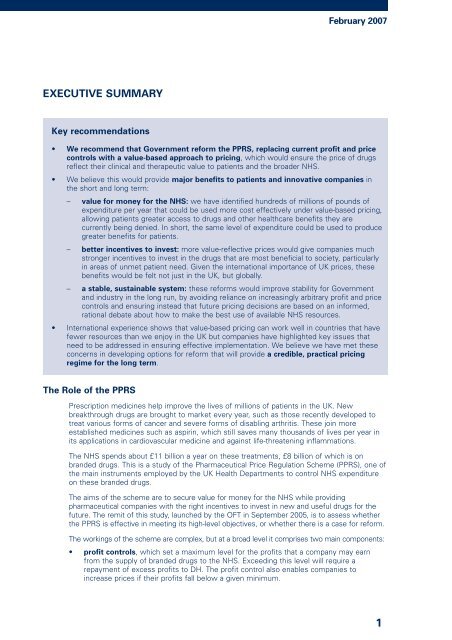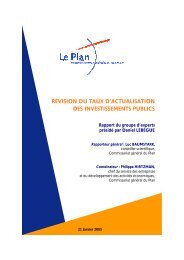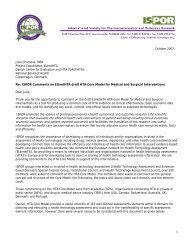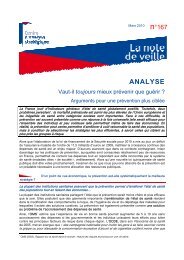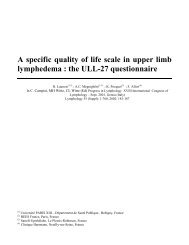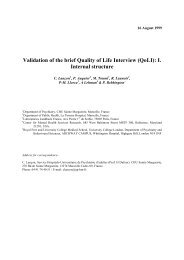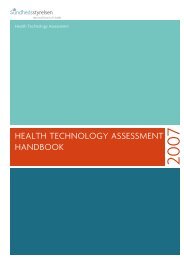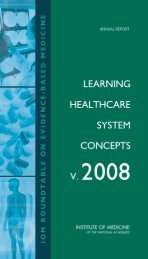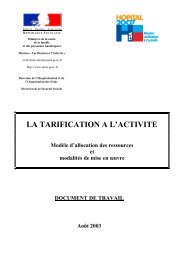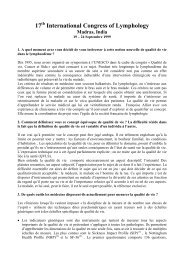The Pharmaceutical Price Regulation Scheme - Office of Fair Trading
The Pharmaceutical Price Regulation Scheme - Office of Fair Trading
The Pharmaceutical Price Regulation Scheme - Office of Fair Trading
Create successful ePaper yourself
Turn your PDF publications into a flip-book with our unique Google optimized e-Paper software.
February 2007EXECUTIVE SUMMARYKey recommendations• We recommend that Government reform the PPRS, replacing current pr<strong>of</strong>it and pricecontrols with a value-based approach to pricing, which would ensure the price <strong>of</strong> drugsreflect their clinical and therapeutic value to patients and the broader NHS.• We believe this would provide major benefits to patients and innovative companies inthe short and long term:– value for money for the NHS: we have identified hundreds <strong>of</strong> millions <strong>of</strong> pounds <strong>of</strong>expenditure per year that could be used more cost effectively under value-based pricing,allowing patients greater access to drugs and other healthcare benefits they arecurrently being denied. In short, the same level <strong>of</strong> expenditure could be used to producegreater benefits for patients.– better incentives to invest: more value-reflective prices would give companies muchstronger incentives to invest in the drugs that are most beneficial to society, particularlyin areas <strong>of</strong> unmet patient need. Given the international importance <strong>of</strong> UK prices, thesebenefits would be felt not just in the UK, but globally.– a stable, sustainable system: these reforms would improve stability for Governmentand industry in the long run, by avoiding reliance on increasingly arbitrary pr<strong>of</strong>it and pricecontrols and ensuring instead that future pricing decisions are based on an informed,rational debate about how to make the best use <strong>of</strong> available NHS resources.• International experience shows that value-based pricing can work well in countries that havefewer resources than we enjoy in the UK but companies have highlighted key issues thatneed to be addressed in ensuring effective implementation. We believe we have met theseconcerns in developing options for reform that will provide a credible, practical pricingregime for the long term.<strong>The</strong> Role <strong>of</strong> the PPRSPrescription medicines help improve the lives <strong>of</strong> millions <strong>of</strong> patients in the UK. Newbreakthrough drugs are brought to market every year, such as those recently developed totreat various forms <strong>of</strong> cancer and severe forms <strong>of</strong> disabling arthritis. <strong>The</strong>se join moreestablished medicines such as aspirin, which still saves many thousands <strong>of</strong> lives per year inits applications in cardiovascular medicine and against life-threatening inflammations.<strong>The</strong> NHS spends about £11 billion a year on these treatments, £8 billion <strong>of</strong> which is onbranded drugs. This is a study <strong>of</strong> the <strong>Pharmaceutical</strong> <strong>Price</strong> <strong>Regulation</strong> <strong>Scheme</strong> (PPRS), one <strong>of</strong>the main instruments employed by the UK Health Departments to control NHS expenditureon these branded drugs.<strong>The</strong> aims <strong>of</strong> the scheme are to secure value for money for the NHS while providingpharmaceutical companies with the right incentives to invest in new and useful drugs for thefuture. <strong>The</strong> remit <strong>of</strong> this study, launched by the OFT in September 2005, is to assess whetherthe PPRS is effective in meeting its high-level objectives, or whether there is a case for reform.<strong>The</strong> workings <strong>of</strong> the scheme are complex, but at a broad level it comprises two main components:• pr<strong>of</strong>it controls, which set a maximum level for the pr<strong>of</strong>its that a company may earnfrom the supply <strong>of</strong> branded drugs to the NHS. Exceeding this level will require arepayment <strong>of</strong> excess pr<strong>of</strong>its to DH. <strong>The</strong> pr<strong>of</strong>it control also enables companies toincrease prices if their pr<strong>of</strong>its fall below a given minimum.1


